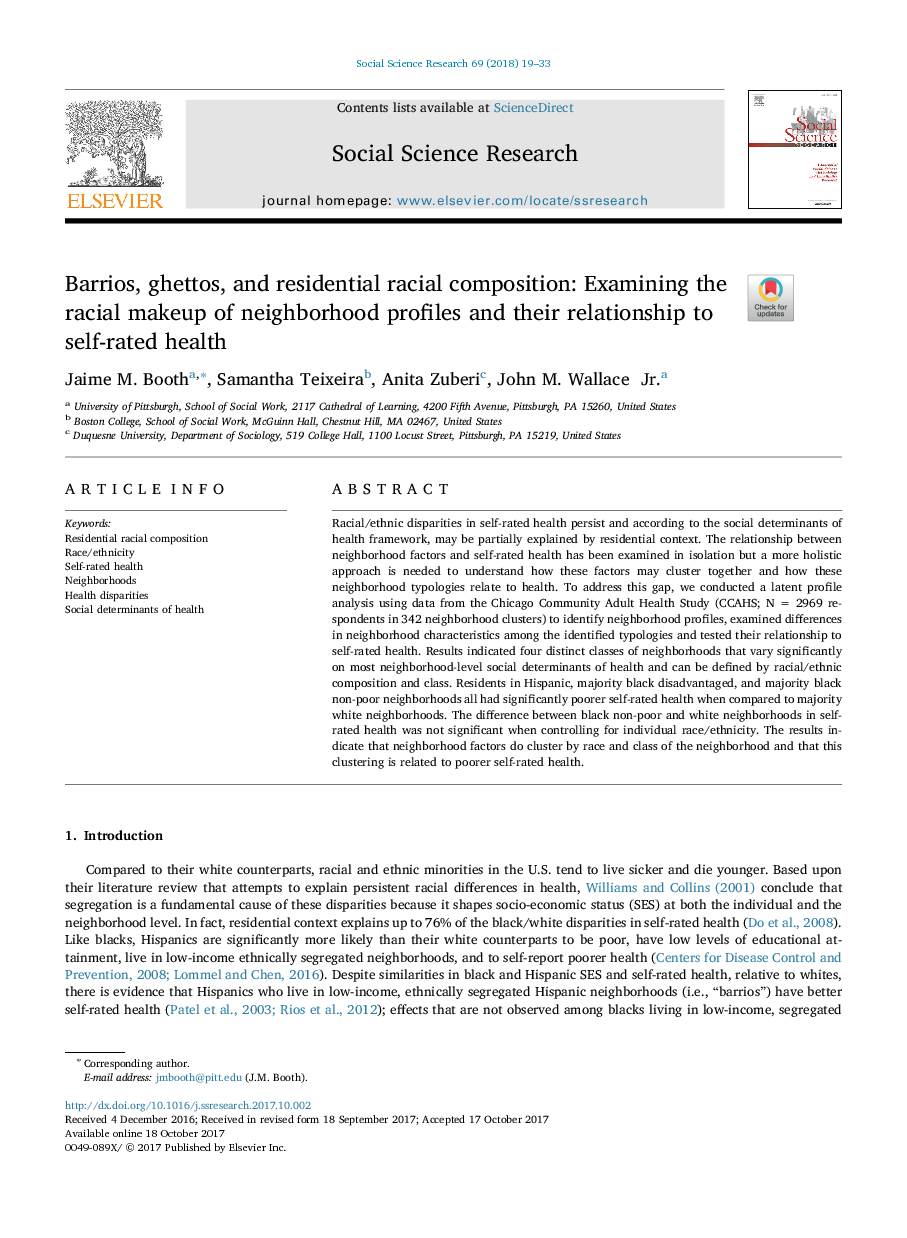ترجمه فارسی عنوان مقاله
باروریوس، گتوها و ترکیب نژادی مسالمت آمیز: بررسی ساختار نژادی نمایه های محله و ارتباط آنها با سلامتی خود ارزیابی
عنوان انگلیسی
Barrios, ghettos, and residential racial composition: Examining the racial makeup of neighborhood profiles and their relationship to self-rated health
| کد مقاله | سال انتشار | تعداد صفحات مقاله انگلیسی |
|---|---|---|
| 134558 | 2018 | 15 صفحه PDF |
منبع

Publisher : Elsevier - Science Direct (الزویر - ساینس دایرکت)
Journal : Social Science Research, Volume 69, January 2018, Pages 19-33
ترجمه کلمات کلیدی
ترکیب نژادی مسکونی، مسابقه / قومیت، سلامت خود ارزیابی، محله ها، تفاوت های بهداشتی، تعیین کننده های اجتماعی سلامت،
کلمات کلیدی انگلیسی
Residential racial composition; Race/ethnicity; Self-rated health; Neighborhoods; Health disparities; Social determinants of health;

